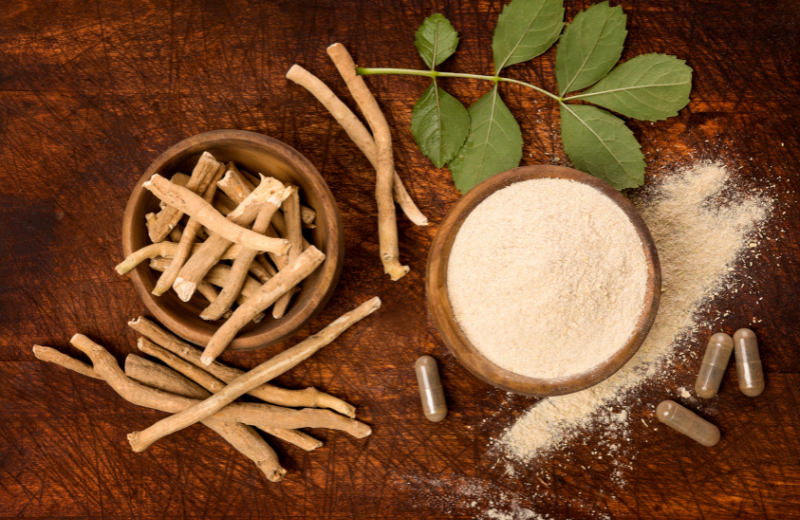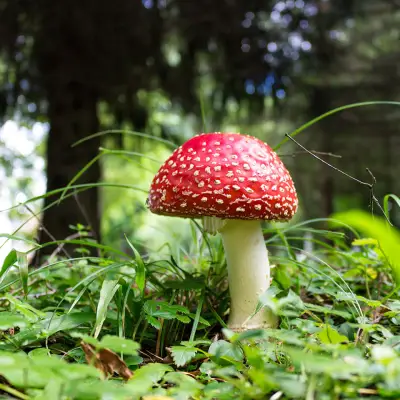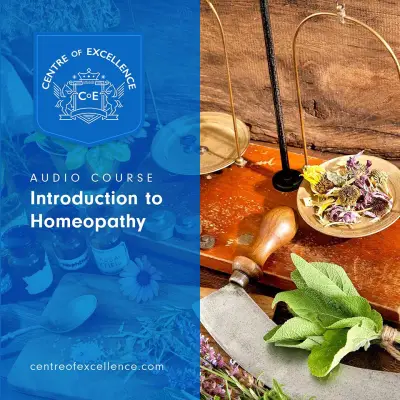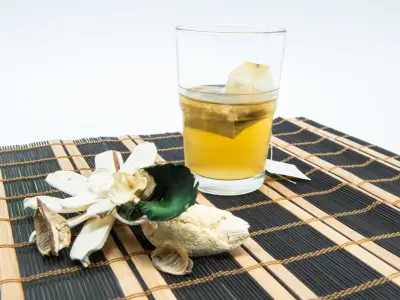If you’ve found yourself searching for information on marshmallow root, chances are you’re looking for something gentle, natural, and healing—perhaps to support your digestive system, soothe a sore throat, or calm irritated skin. Known for its soft, soothing properties, the root of marshmallow is often used in traditional herbal remedies, and its popularity continues to grow among those looking for plant-based solutions to everyday ailments.
In this guide, you’ll learn exactly what marshmallow root is, how it works, the different forms it comes in, and whether it’s right for you.
This article is for informational purposes only and is not a substitute for professional medical advice, diagnosis, or treatment. Always consult with your GP or a qualified healthcare professional before starting any new herbal remedies, especially if you are pregnant, breastfeeding, taking medication, or managing a health condition.
Jump to:
- What is Marshmallow Root?
- The Benefits of Marshmallow Root
- What Types of Marshmallow Root Can You Take?
- What is the Best Form of Marshmallow Root to Take?
- How Much Marshmallow Root Should You Take, and When?
- The Best Time to Take Marshmallow Root
- What Are the Side Effects of Marshmallow Root?
- Who Should Avoid Marshmallow Root?
- Is Marshmallow Root Safe for Long-Term Use?
- Other Common Questions About Marshmallow Root
- Study Our Master Herbalist Diploma for £29
Recommended for you!
Best SellersWhat is Marshmallow Root?
Marshmallow root comes from the Althaea officinalis plant, a perennial herb native to Europe, Western Asia, and North Africa. It’s not the fluffy sweet you might first think of, although the confectionery was originally made using the plant’s sap.
The root, leaves, and flowers of the marshmallow plant have all been used in herbal medicine, but it’s the root marshmallow that’s particularly valued for its high mucilage content. Mucilage is a thick, gel-like substance that becomes slippery when mixed with water, giving marshmallow its soothing, coating effect.
The Benefits of Marshmallow Root

Marshmallow root has a long tradition in herbal medicine thanks to its gentle, soothing properties. It’s widely used for its ability to protect and calm the body, particularly where irritation or inflammation is present. Let’s explore the most commonly recognised benefits of this versatile plant.
Soothes Digestive Issues
Marshmallow root is most often praised for its support of digestive health. Its high mucilage content creates a soothing, protective coating along the lining of the stomach and intestines. This helps reduce inflammation and irritation, particularly in conditions such as acid reflux, gastritis, and irritable bowel syndrome (IBS). Beyond easing symptoms, marshmallow root also helps the gut lining recover by offering a natural shield against further damage.
Eases Respiratory Discomfort
The demulcent properties of marshmallow root make it useful for calming the throat and airways. It forms a soothing layer over mucous membranes, which can be particularly comforting during bouts of coughing, sore throat, or seasonal allergies. Many herbalists recommend marshmallow root in teas and syrups for gentle respiratory relief, especially when symptoms are persistent or aggravated by dryness.
Supports Skin Health
Used topically, marshmallow root can calm inflammation and promote healing in the skin. It’s often included in creams and salves aimed at soothing burns, insect bites, rashes, and general skin irritation. Its natural ability to reduce redness and retain moisture makes it a nourishing addition to skincare. Many people use marshmallow root extract in facial products to hydrate and soften the skin while reducing puffiness or sensitivity.
Offers Hormonal and Female Support
Though formal studies are limited, marshmallow root has traditionally been used to support female health. It’s thought to help ease menstrual discomfort and counteract dryness caused by hormonal fluctuations. This gentle support makes it a welcome addition to herbal blends aimed at balancing the female cycle or enhancing comfort during menopause.
Calms Urinary Tract Discomfort
Marshmallow root is often found in herbal remedies for urinary health. Its soothing mucilage can ease irritation in the bladder and urinary tract, encouraging smoother urination and reducing inflammation. This makes it a popular choice in blends designed to maintain urinary comfort and support recovery during infection or inflammation.
Reduces Inflammation
One of the most valued traits of marshmallow root is its natural anti-inflammatory action. By calming irritated tissues in the gut, throat, skin, and urinary tract, it helps reduce discomfort across a range of conditions. The mucilage not only coats and soothes but may also help minimise swelling and redness internally and externally.
Helps with Weight Management
While marshmallow root isn’t a direct weight loss solution, it can support your overall wellness journey. By calming the digestive system, reducing bloating, and supporting gut health, it can help the body feel more balanced. Some people find that drinking marshmallow root tea between meals also helps manage cravings, supporting healthier eating patterns in a gentle, natural way.
What Types of Marshmallow Root Can You Take?
Marshmallow root is available in a variety of forms, allowing you to choose what best fits your lifestyle and wellness goals. Each type delivers unique benefits and can be incorporated into your daily routine with ease.
You’ll find marshmallow root in teas, capsules, tinctures, powders, extracts, dried root, creams, and syrups. Some forms are ideal for soothing digestive issues or respiratory discomfort, while others are perfect for calming irritated skin or supporting general wellbeing.
What is the Best Form of Marshmallow Root to Take?

- Teas: Marshmallow root tea is one of the most traditional and soothing ways to consume this herb. Ideal for calming the digestive tract and easing sore throats, tea allows the mucilage to be fully extracted and absorbed. This format is perfect if you enjoy herbal infusions and want gentle, natural support throughout the day.
- Capsules and Pills: These are a convenient and consistent option, offering controlled dosing with minimal effort. Great for those who want an easy way to incorporate marshmallow dry extract into their daily routine, especially for gut and urinary health support.
- Tinctures: Liquid marshmallow root extract is typically taken under the tongue or mixed into water. It’s fast-acting and highly absorbable, making it an excellent choice for those needing quick relief from digestive upset or respiratory irritation. Learn how to make your own herbal tinctures.
- Powders: Root marshmallow powder can be mixed into warm water, smoothies, or honey. It offers a natural and customisable way to take the herb, ideal for those who prefer to tailor their intake or blend it with other supportive herbs like slippery elm.
- Dried Root: Whole marshmallow root can be used to brew decoctions or long-steeped teas. Though slightly less convenient, this form is favoured by herbalists and those who enjoy making their own home remedies.
- Creams and Ointments: Topical products containing marshmallow extract are designed to calm and hydrate irritated or inflamed skin. Ideal for those seeking relief from eczema, minor wounds, or dry patches, these are applied directly to the affected area.
- Syrups: Often blended with other herbs, marshmallow syrups are used for respiratory support and throat soothing. They’re a gentler option, especially for children or anyone who prefers a liquid over tablets.
How Much Marshmallow Root Should You Take, and When?
The right dosage depends on the form you’re using and the purpose for taking it. Here are typical guidelines:
- Teas: Use 1–2 teaspoons of dried marshmallow root per cup of hot water. Steep for 10–20 minutes and drink up to three times daily. For maximum mucilage extraction, use cold water and let it steep for several hours.
- Capsules/Pills: Most products suggest between 300mg and 1200mg per day, depending on the concentration of marshmallow dry extract. Follow the product label and consult a herbalist if unsure.
- Tinctures: Take 1–2ml (roughly 20–40 drops) up to three times a day. This can be diluted in a small amount of water or taken directly under the tongue.
- Powder: Start with 1–2 grams daily, mixed with warm water or herbal tea. You can gradually increase based on your body’s response and your reason for using it.
- Dried Root: If making your own teas or decoctions, use 2–5 grams per day. You can prepare a larger batch to store in the fridge and sip throughout the day.
- Creams/Ointments: Apply a thin layer to the affected skin area 1–2 times daily, or as directed by the product.
- Syrups: Use 1–2 teaspoons up to three times a day for soothing respiratory symptoms or calming throat irritation.
The Best Time to Take Marshmallow Root
Marshmallow root is best taken between meals, particularly if you're using it to soothe the digestive tract or address acid reflux. When used for general wellbeing or immune support, morning or midday doses are usually effective.
For gut support, taking it 30–60 minutes before or after meals can help coat and protect the stomach lining. If you’re using marshmallow root tea or tincture to soothe the throat or respiratory tract, you can take it as needed throughout the day. Topical forms can be applied any time symptoms arise.
What Are the Side Effects of Marshmallow Root?

Common side effects of marshmallow root are typically mild and tend to occur when taken in high doses or used over extended periods. Most people tolerate marshmallow root well, especially when following recommended guidelines. However, in some cases, people may experience:
- Digestive discomfort, such as bloating, nausea, or an unsettled stomach
- Dizziness or a feeling of light-headedness
- Mild skin irritation when applied topically
- Delayed absorption of medications due to the mucilage coating the stomach lining
Marshmallow root contains mucilaginous compounds that form a protective barrier on internal tissues, particularly in the gut and throat. While this can be soothing and beneficial, it may interfere with how your body absorbs certain medications. To avoid this, it's advised to take marshmallow root supplements at least one to two hours apart from any prescribed medication. Starting with a low dose and gradually increasing it can also help minimise unwanted effects.
Who Should Avoid Marshmallow Root?
Pregnant and breastfeeding women are generally advised to avoid marshmallow root unless under the guidance of a qualified healthcare provider. While it is considered gentle, there isn’t enough safety data regarding its effects during pregnancy or lactation.
People with diabetes should use caution, as marshmallow root may affect blood sugar levels and potentially interfere with diabetes medication. Similarly, anyone taking diuretics or lithium should speak to a doctor before using marshmallow root, as it may influence the way these drugs are processed in the body.
Those with upcoming surgery should avoid marshmallow root in the days leading up to the procedure, due to its potential to interfere with medication absorption or interact with anaesthesia.
Anyone with known allergies to the marshmallow plant or similar herbs should be cautious, especially when using it on the skin, as topical reactions such as redness or itching may occur.
Is Marshmallow Root Safe for Long-Term Use?
Marshmallow root is considered safe for most healthy adults when used appropriately over the short to medium term. However, its long-term effects have not been thoroughly studied, so ongoing daily use should be approached with care.
To reduce the likelihood of side effects and maintain its effectiveness, some people choose to take marshmallow root in cycles; for example, using it daily for several weeks followed by a short break. This allows the body to rest and may help prevent tolerance or reduced benefits over time.
As with any herbal supplement, it’s important to listen to your body. If you notice any changes or have an existing medical condition, it’s always best to consult a healthcare professional before continuing long-term use.
Recommended for you!
Best SellersOther Common Questions About Marshmallow Root
How long does it take for marshmallow root to work?
Some people notice relief within an hour, especially for throat or digestive symptoms. For chronic issues, it may take a few days of consistent use.
Does marshmallow root affect hormones or the thyroid?
There’s no strong evidence that marshmallow root directly impacts hormones or thyroid function, though anecdotal reports suggest it may provide hormonal support in women.
Does marshmallow root help with weight loss?
Not directly, but it may support overall wellness, reduce bloating, and help regulate digestion—factors that can contribute to weight balance.
How does marshmallow root make you feel?
Most people report feeling soothed, comforted, and calmer, especially in the digestive tract and throat.
Does marshmallow root thicken hair?
There’s little evidence for this, but some topical products containing marshmallow extract aim to soften and condition the hair.
Is marshmallow root a prebiotic?
Marshmallow root may act as a mild prebiotic, feeding the good bacteria in your gut.
What does marshmallow root do for the lungs?
It helps soothe irritation and inflammation in the respiratory tract, making it a gentle option for coughs and mild bronchial discomfort.
Can you mix marshmallow root and slippery elm together?
Yes, you can. These two herbs work well together because they both contain mucilage, which soothes and protects irritated tissues, particularly in the digestive and respiratory systems. They’re often combined in herbal teas or supplements for a calming, coating effect.
Study Our Master Herbalist Diploma for £29
If you’ve found yourself fascinated by the potential of marshmallow root and other natural remedies, why not deepen your understanding? Whether you're a beginner or looking to expand your knowledge, Centre of Excellence offers a comprehensive Master Herbalist Diploma Course, designed for people of all levels.
The course covers everything from herb identification and preparation to building herbal blends for specific emotional and physical needs. Follow the link to access the course for just £29!












